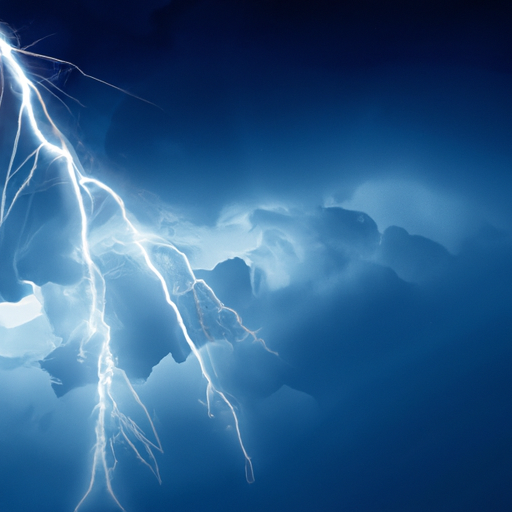Step into the enchanting world of Cinquain Poetry, where the American Haiku inspires a unique style of verse. With its five lines per stanza, each following a distinct 1, 2, 3, 4, 1 syllable pattern, Cinquain poems captivate readers with their concise yet evocative nature. In this article, we invite you on a poetic journey, exploring a collection of diverse Cinquain poems. Each verse showcases the creative use of limited words and syllables to convey profound meaning. Delve into the realm of structured beauty, where the art of word choice and structure intertwine in mesmerizing harmony. Join us as we unravel the magic of Cinquain Poetry, a true delight for literary enthusiasts.
Definition of Cinquain Poetry
Cinquain poetry is a unique form of American poetry that is inspired by the structure and brevity of haiku poetry. It consists of five lines per stanza, with a specific syllable pattern of 1, 2, 3, 4, 1. This concise format challenges writers to convey deep meaning and evoke emotions within a limited number of words and syllables. Cinquain poetry is a beautiful blend of creativity and constraint, allowing poets to explore structured thinking and enhance their word choice skills. In this article, we will explore the origin and types of cinquain poetry, as well as its influence on contemporary literature and the benefits of writing in this poetic form.
Origin and Background of Cinquain Poetry
Cinquain poetry was developed in the early 20th century by an American poet named Adelaide Crapsey. Inspired by the haiku form of Japanese poetry, Crapsey sought to create a concise and structured style of poetry that would allow for creative expression within defined constraints. The word “cinquain” itself refers to the number five, reflecting the five-line structure of this poetic form. Crapsey’s cinquains gained popularity and soon became a recognized style in American literature.
Structure and Syllable Pattern
The structure of a cinquain poem is characterized by its five-line stanza. Each line has a specific number of syllables, following a pattern of 1, 2, 3, 4, 1. This syllable pattern creates a sense of rhythm and balance within the poem. The limited number of words and syllables encourages poets to carefully select their language and employ concise, vivid imagery to convey their intended meaning. The structure of a cinquain allows for a focused and impactful expression of thoughts and emotions.
Comparison with Haiku Poetry
While cinquain poetry is inspired by the structure of haiku poetry, there are distinct differences between the two forms. Haiku is a traditional Japanese form of poetry, consisting of three lines with a syllable pattern of 5, 7, 5. Haiku poems often emphasize the juxtaposition of contrasting images and evoke a sense of nature and the changing seasons. On the other hand, cinquain poetry allows for greater flexibility in subject matter and encourages creative expression within a defined syllable pattern. While both forms value brevity and concise language, cinquain poetry offers a unique opportunity for structured thinking and creative expression.
Types of Cinquain Poetry
Cinquain poetry encompasses several different types, each with its own distinctive structure and characteristics. Let’s explore some of the most common types of cinquain poetry:
Classic Cinquain
The classic cinquain is the original form created by Adelaide Crapsey. It consists of five lines with a 1, 2, 3, 4, 1 syllable pattern. The classic cinquain often focuses on nature or personal experiences, allowing the poet to convey their thoughts and emotions concisely.
American Cinquain
The American cinquain, also known as the “didactic cinquain,” was popularized by the poet Lily Melana, expanding upon Adelaide Crapsey’s original form. It follows a syllable pattern of 2, 4, 6, 8, 2, providing more room for description and detail. The American cinquain is often used to explore a specific topic or theme in a concise yet descriptive manner.
Didactic Cinquain
The didactic cinquain is a variation of the American cinquain, which adds an extra line to the structure. It follows a syllable pattern of 2, 4, 6, 8, 2, 1, allowing for an even more detailed exploration of a subject or theme. The didactic cinquain is often used in educational settings, as it lends itself well to teaching and learning about various topics.
Butterfly Cinquain
The butterfly cinquain is a symmetrical variation of the classic cinquain. It follows a syllable pattern of 2, 4, 6, 8, 2, 8, 6, 4, 2, creating a visually appealing shape resembling the wings of a butterfly. This form allows for a more expansive expression of thoughts and emotions, while still maintaining the structured nature of cinquain poetry.
Crown Cinquain
The crown cinquain is a more complex form of cinquain poetry, consisting of multiple cinquain stanzas linked together in a specific sequence. The last line of one stanza becomes the first line of the next, creating a “crown” effect. This form allows for a deeper exploration of a subject or theme, building upon the ideas established in each stanza.
Exploring the American Haiku Inspired Style
The American haiku inspired style of cinquain poetry combines the brevity and simplicity of haiku with the structured approach of cinquain. This style draws inspiration from the Japanese haiku form while adding a distinctly American touch.
Influence of Haiku on American Cinquain
Haiku poetry has had a significant influence on the development of cinquain poetry in America. The haiku form, with its focus on nature and concise expression, served as a source of inspiration for American poets seeking to create a similar sense of brevity and beauty in their own work. From the syllable pattern to the emphasis on vivid imagery, haiku’s influence can be seen throughout the various types of cinquain poetry.
Structure of American Cinquain
The American cinquain, a popular variation of cinquain poetry, incorporates elements of haiku while still maintaining its own unique structure. With a syllable pattern of 2, 4, 6, 8, 2, the American cinquain provides poets with more flexibility and room for description than the classic form. This structure allows for a greater exploration of emotions, thoughts, and themes while still adhering to the concise and structured nature of cinquain poetry.
Examples of American Cinquain Poems
To understand the American haiku inspired style of cinquain poetry better, let’s explore a few examples:
-
Silent night Shimmering stars, bright Whispering winds, lovesome Peaceful dreams, gentle slumber Tranquil dawn
-
Golden leaves Flutter, dance, and weave Autumn’s palette, vibrant hues Nature’s tapestry on display Harvest time
These examples showcase the five-line structure of the American cinquain, with each line containing the appropriate number of syllables. The poems capture moments in time, evoking emotions and painting vivid pictures with limited words and syllables.
Benefits of Writing Cinquain Poetry
Writing cinquain poetry offers several benefits that can enhance a writer’s creativity and literary skills. Let’s explore some of the advantages of engaging in this poetic form:
Encouragement of Creativity within Constraints
The structured nature of cinquain poetry challenges writers to think creatively within defined constraints. The limited number of syllables forces poets to carefully select their words and convey their thoughts and emotions concisely. This constraint can lead to unexpected and imaginative expressions, encouraging poets to find unique ways to communicate and evoke emotions.
Enhancement of Word Choice Skills
In cinquain poetry, every word counts. Writers must choose their words carefully to maximize the impact of their poems. This focus on word choice allows poets to develop their vocabulary and deepen their understanding of how language can evoke different emotions and imagery. Writing cinquains can enhance a writer’s ability to select powerful and evocative words, enriching their overall writing skills.
Development of Structured Thinking
Cinquain poetry requires a structured approach to composition, as the syllable pattern and five-line structure must be followed. This form of poetry encourages writers to think deliberately about the placement and arrangement of words, enabling them to develop structured thinking skills. The poet must consider the rhythm, flow, and impact of each line, leading to greater clarity and intention in their writing.
Greater Appreciation for Concise Language
Writing cinquains fosters an appreciation for a concise and impactful language, as poets must convey their intended meaning with a limited number of words and syllables. This form of poetry teaches writers to prioritize brevity and eliminate unnecessary words or phrases, resulting in a more focused and impactful writing style. The ability to communicate effectively with fewer words is a valuable skill in any form of writing.
How to Write Cinquain Poetry
If you’re interested in trying your hand at writing cinquain poetry, here is a step-by-step guide to help you get started:
Choose a Topic or Theme
Start by selecting a topic or theme that resonates with you. It could be a particular moment, a natural scene, an emotion, or anything that inspires you creatively.
Determine the Syllable Pattern
Decide on the syllable pattern you want to use. The classic cinquain follows a 1, 2, 3, 4, 1 structure, but you may also explore other types such as the American cinquain or the butterfly cinquain. The syllable pattern will help guide the structure and rhythm of your poem.
Construct the Five Lines
Compose your poem, following the chosen syllable pattern. Craft each line carefully, selecting words that capture the essence of your chosen topic or theme. Ensure that each line contributes to the overall flow and meaning of the poem.
Refine and Revise the Cinquain
Once you have completed the initial draft, take the time to refine and revise your cinquain. Pay attention to the choice of words, the rhythm, and the overall impact of the poem. Consider whether each line contributes effectively to the overall message or image you want to convey.
Example Step-by-Step Guide
To illustrate the process, let’s walk through an example step-by-step guide on how to write a cinquain poem:
-
Choose a Topic or Theme: Let’s say our chosen theme is “Sunset.”
-
Determine the Syllable Pattern: For this example, we’ll use the classic cinquain pattern of 1, 2, 3, 4, 1.
-
Construct the Five Lines: Sunset Golden, warm Colors paint the sky Day bids a gentle farewell Peace
-
Refine and Revise the Cinquain: After reviewing the initial draft, you may choose to tweak certain words or lines to enhance the overall impact. The focus should be on capturing the essence of the topic and evoking emotions within the limited syllable pattern.
Writing cinquain poetry is a rewarding and creative endeavor. By following these steps, you can explore this unique form and express your thoughts and emotions in a concise yet powerful manner.
Tips for Writing Effective Cinquain Poetry
To make your cinquain poems even more impactful and engaging, consider these tips:
Use Strong and Concrete Language
Because cinquain poetry relies on brevity, it’s important to choose words that are evocative and impactful. Opt for strong and vivid language that paints a clear picture in the reader’s mind. Concrete imagery helps create a powerful emotional connection.
Experiment with Line Breaks
Line breaks in cinquain poetry can have a significant impact on the poem’s rhythm and flow. Play around with different line breaks to create varying effects. Consider using enjambment (continuing a sentence or phrase across multiple lines) to add an element of surprise or create a sense of continuity.
Consider the Emotional Impact
Cinquain poetry is an excellent vehicle for conveying emotions concisely. Be intentional about the emotional impact you want your poem to have. Use carefully chosen words and imagery to evoke specific feelings in your readers.
Avoid Overcomplicating the Structure
While cinquain poetry allows for creativity within a structured format, it’s important to strike a balance. Avoid overcomplicating the structure or using excessive description that may dilute the impact of your poem. Remember that concise language and a clear focus are key.
Read and Study Cinquain Poems
To improve your own cinquain writing, immerse yourself in the work of other cinquain poets. Read a wide variety of cinquain poems from different time periods and explore the various subtypes. Pay attention to how different poets utilize structure, imagery, and language to create impactful cinquains. Study their techniques and use them as inspiration for your own writing.
Famous Cinquain Poets
Throughout history, several poets have made significant contributions to the world of cinquain poetry. Let’s celebrate and honor a few of these influential poets:
Adelaide Crapsey
Adelaide Crapsey, the creator of cinquain poetry, is considered one of the pioneers of this poetic form. Her cinquains, filled with precise imagery and powerful language, captivated readers and influenced generations of poets.
S. M. Lamp
S. M. Lamp is known for her innovative use of cinquain poetry. Her poems often explore themes of nature, love, and spirituality, capturing moments of beauty and introspection with elegance and grace.
Joseph Payne Brennan
Joseph Payne Brennan’s cinquains delve into the realms of horror and the macabre. His unique poetic voice and ability to evoke a sense of unease through concise, chilling language have made him a celebrated figure in the world of cinquain poetry.
Laurie Byro
Laurie Byro is a contemporary poet celebrated for her mastery of the butterfly cinquain form. Her cinquains capture the beauty of everyday life and offer a glimpse into the human experience with vivid imagery and heartfelt emotions.
Angela Yardy
Angela Yardy is a talented poet known for the emotional depth and thought-provoking nature of her cinquains. Her poems explore a wide range of topics, from nature to spirituality, leaving readers with a sense of contemplation and renewed appreciation for concise language.
The Impact of Cinquain Poetry in Contemporary Literature
Cinquain poetry has had a notable impact on contemporary literature in various ways. Let’s explore how this poetic form continues to influence modern poetic forms and is utilized in education and online communities.
Influence on Modern Poetic Forms
Cinquain poetry has paved the way for various modern poetic forms that emphasize brevity and concise language. Poets continue to experiment with different syllable patterns, line breaks, and styles, building upon the foundation laid by cinquain poetry. The influence of cinquain can be seen in contemporary micro-poetry and other forms that prioritize capturing powerful emotions within a limited space.
Use in Education and Workshops
Cinquain poetry is often introduced in educational settings and creative workshops as an excellent tool for teaching structured thinking, word choice, and concise expression. Students are encouraged to explore their creativity within the defined syllable pattern, fostering an appreciation for language and the power of concise communication.
Online Communities and Cinquain Contests
The popularity of cinquain poetry has extended to online communities and social media platforms. Websites and forums dedicated to poetry often host cinquain contests, inviting poets to showcase their talents and engage with the community. This digital platform has allowed cinquain poetry to reach a wider audience and has created a supportive environment for poets to share their work.
Listicle: Top 5 Cinquain Poems of All Time
To showcase the beauty and impact of cinquain poetry, here are five notable cinquains that have stood the test of time:
-
‘Amaze’ by Adelaide Crapsey: “I know Not these my hands And yet I think there was A woman like me once had hands Like these.”
-
‘O Coal Black Smith’ by S. M. Lamp: “O coal black Smith, Who are those children Children crying in the night? I am a Smith, my name is Death: Shut your eyes.”
-
‘Lament for a Gibbet Cage’ by Joseph Payne Brennan: “Silent and lone the gibbet stands Where swung the wretched felon’s life, So God decrees, whose high right hand Bestowe th’ eternal chastisement Of strife.”
-
‘Persephone’ by Laurie Byro: “Persephone loves me. She’s a ’fraidy cat, runs to Mom when I go feed her worms ‘n’ bugs. Ain’t she cute?”
-
‘The Deer’ by Angela Yardy: “Deep woods Host silent beings Unseen, they tread the path Of twilight, where dusk’s creatures thrive Unheard.”
Each of these cinquains showcases the power of concise language and evocative imagery. In just a few lines, these poets capture a range of emotions and create vivid scenes, leaving a lasting impact on readers.
Table: Comparison of Haiku and Cinquain Poetry
| Aspect | Haiku Poetry | Cinquain Poetry |
|---|---|---|
| Number of Lines | 3 | 5 |
| Syllable Pattern | 17 syllables | 1, 2, 3, 4, 1 syllables |
| Origin | Japanese | American |
| Structure | Use of juxtaposition and | Emphasis on word choice and creative expression |
| descriptive imagery |
Haiku and cinquain poetry share similarities in their focus on brevity and the use of concise language. However, they differ in terms of the number of lines, the syllable pattern, and the origins of the two poetic forms. Haiku often emphasizes the juxtaposition of contrasting images and evokes a sense of nature and seasons, while cinquain poetry places emphasis on word choice and creative expression.
In conclusion, cinquain poetry offers a unique and structured approach to creative expression. From its origin with Adelaide Crapsey to its continued influence on contemporary literature, cinquain poetry has captivated readers with its concise yet powerful language. Through its various types, such as the classic, American, didactic, butterfly, and crown cinquain, poets have explored a range of topics and themes, painting vivid images and evoking strong emotions. Writing cinquain poetry encourages creativity within constraints, enhances word choice skills, promotes structured thinking, and fosters a greater appreciation for concise language. Whether you are a seasoned poet or a newcomer to the world of poetry, cinquain offers a wonderful avenue for expressing thoughts and emotions with precision and artistry. So pick up your pen, embrace the challenge of the cinquain form, and let your words create beauty within the confines of structure.



